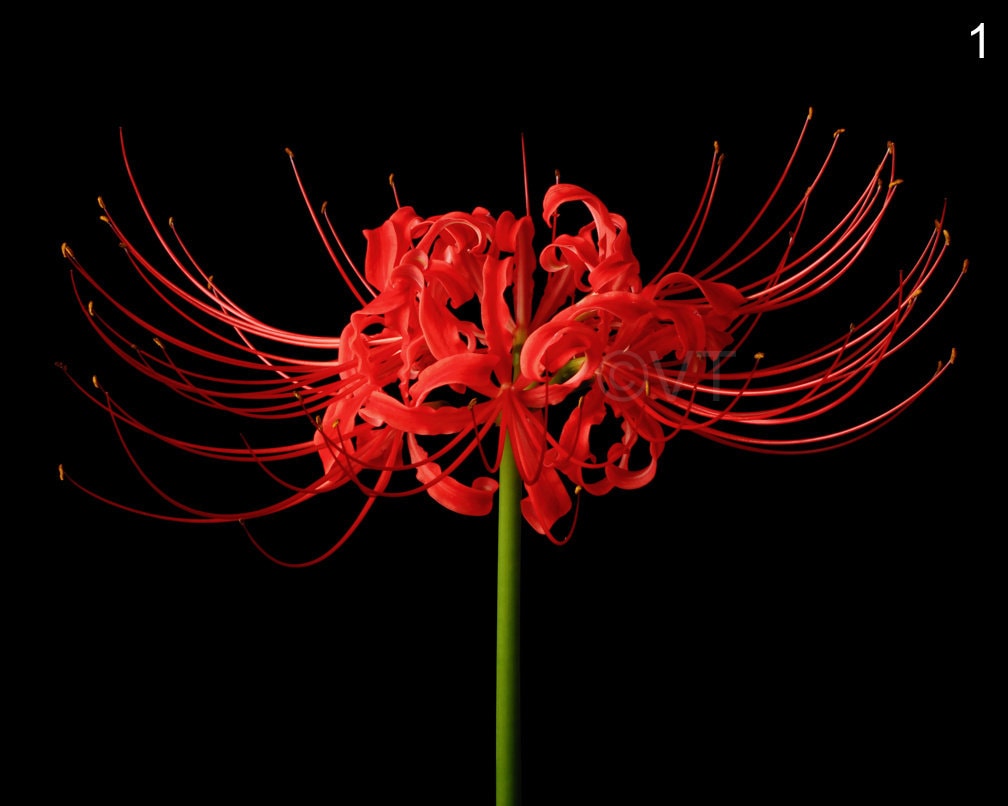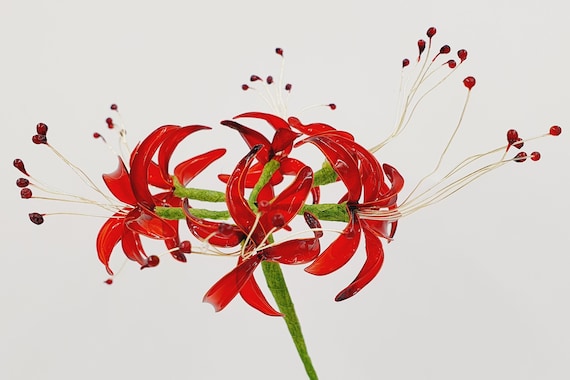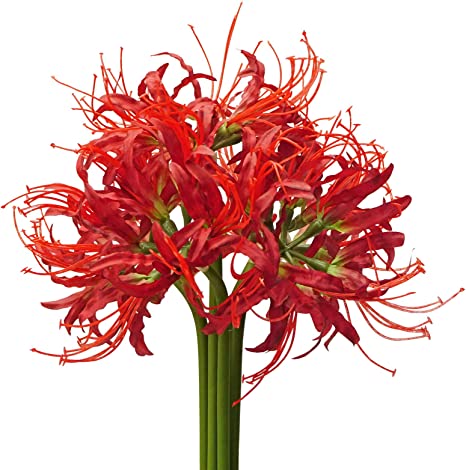One of the most stunning flowers, Lycoris Albiflora, often known as the white spider lily, has six to eight blooms. Its long, curly white petals and lengthy stamens make it the ideal summer flower. For the same reason, people plant them in their gardens or backyards.
But why is this lovely flower called the “Spider” after a perilous and unsettling insect? Does this blossom start to resemble a spider in any way?
Well! The amaryllis family includes the species Lycoris albiflora. The breed, along with a few other flower breeds, was first introduced in Japan. Today’s planet, however, is largely covered in white spider lilies. They are widespread in Europe, Asia, and America.
One of the best possibilities for indoor gardening is their flowers. Six to eight gleaming white flowers with exquisitely curled petals and extraordinarily long stamens make up this gorgeous and alluring group. The white spider lily’s majority of its petals are dual-shaded, and a beautiful creamy pink stripe runs through the center of each one. Typically in late summer, the blossoms appear on naked stalks and remain until early October. These flowers can reach heights of 18 to 25 inches (45–60 cm) and a width of 12 inches.
Lycoris albiflora is a magnificent flowering bulb that, taken as a whole, gives your backyard garden a sense of beauty and elegance. White spider lilies would be a terrific choice if you’re seeking for the ideal flower kind to give your property a completely fresh and gorgeous look. To ensure the greatest benefits, there are a few crucial things you must understand, such as how to care for flowers and when they blossom.
Stay tuned, and we’ll let you know everything important! Before you plant white spider lilies in your home, you should be familiar with them. So let’s go on without spending any more time.
The various meanings of the white spider lily make it more amazing to grow.
Specifications for white lilies:
| Common names | White spider lily: Lycoris Albiflora, White Lily, White spider lily |
| Botanical name: | Hymenocallis Carolina |
| Family: | Amaryllis |
| Country of origin: | Japan |
| Color: | White, Yellow, Cream, Beige, Nude, Pale white, Pale yellow |
| Flower shape: | Spider shaped |
| Blooming time: | From late summers to early winters |
| Native areas: | Were first introduced in Japan. However, in today’s world, their native area is in the US. |
| Toxicity: | poisonous to humans |
| Price | $10 to $30 |
Table of Contents
About Hymenocallis (White Spider Lilies Native to USA)
Hymenocallis is a sub-branch of white spider lilies that resemble daffodils, to put it simply. These bulbous perennials occur in dazzling white, pastel white, cream, and yellow hues and are aromatic. The central cup, which is surrounded by protruding stems and spreading tepals, is the ornament on hymenocallis, which are born on thick stems.
Native to the US, this variety of spider lily blooms in the middle to end of the summer. For damp soil, the flower variety is a fantastic choice. Consequently, you can also plant flower bulbs along pond edges. These common varieties of Hymenocallis are some you might want to think about
Hymenocallis Tropical giant
A perennial with bulbs, tropical gigantic blooms in the middle of the summer with snow-white flowers that have a distinctive aroma. The blossoms look like a huge white spider when they first emerge. These, however, are fragrant flowers, not actual spiders.
A cup with a Chartreuse neck is present in each blossom. The Tropical Giants can reach heights of 25 to 27 inches and widths of about 90 cm.
Hymenocallis Sulphur Queer
The most well-known and prestigious kind of Hymenocallis is this one. With a great aroma, the sensitive bulbous tumbles up to 6 to 7 large-sized flowers.
Sulphur Queen, however, is yellow rather than white in appearance. Each of these flowers has a yellow cushioned cup and green stripes.
Hymenocallis Latifolia
Because latifolia don’t require a lot of sunshine to grow, you can plant them in wet conditions. however, to perform routine upkeep.
4 Tips to Grow White spider Lily
If you don’t give flowers the proper care, they won’t last for a longer time. And when you bring up white spider lilies, the situation becomes much more delicate.
This flower expects its owner to take good care of it. So how are white spider lilies maintained?
Well! Here are some things to think about for this.
Every plant has to be watered because it is necessary for photosynthesis. To keep the soil equally moist during the growing season, water the plant frequently. Don’t overwater, though, as this can kill the entire plant.
Temperature; since temperature has a significant impact on plant growth, be careful to plant the white spider lilies at the appropriate temperature. Lycoris albiflora thrives best in environments between 70 and 85 degrees.
Fertilizer: As the name implies, fertilizers aid in the growth of new branches and flowers on plants. In the spring and summer, be careful to feed your Lycoris albiflora every two weeks. Don’t forget to get high-quality items as well.
The parent bulbs should be divided from the new ones in the spring and potted separately. For the first month, water newly potted bulbs every day until you notice some new growth.
When do white spider lilies bloom
In locations with direct sunlight, Lycoris albiflora thrives. Late July is when most of its varieties bloom. In the spring, leaves begin to emerge, but by the middle of the summer, they are gone.
To ensure a robust bloom, you must plant the bulb in the winter and water it throughout the spring. So, during the growing season, water sparingly.
Are spider lilies poisonous to humans?
Unfortunately, White Spider Lilies are dangerous to people because they contain lycorine, a toxic substance that is harmful to the body. This plant’s original usage was to destroy insects and pests that attacked crops, according to study.
So, if you have white spider lilies in your garden or backyard, tell your kids and dogs not to eat them because they can lead to severe illnesses including vomiting and diarrhea.
Spider lily poison effects
Consequences of spider lily poison include vomiting, diarrhea, and pain in the abdomen. You may occasionally have excessive salivation and nausea, which indicate that your throat and stomach are being affected.
Conclusion
Source:
https://gardeningsolutions.ifas.ufl.edu/plants/ornamentals/spider-lily.html
https://ucanr.edu/blogs/blogcore/postdetail.cfm?postnum=50466&sharing=yes
https://plants.ces.ncsu.edu/plants/hymenocallis-occidentalis/



